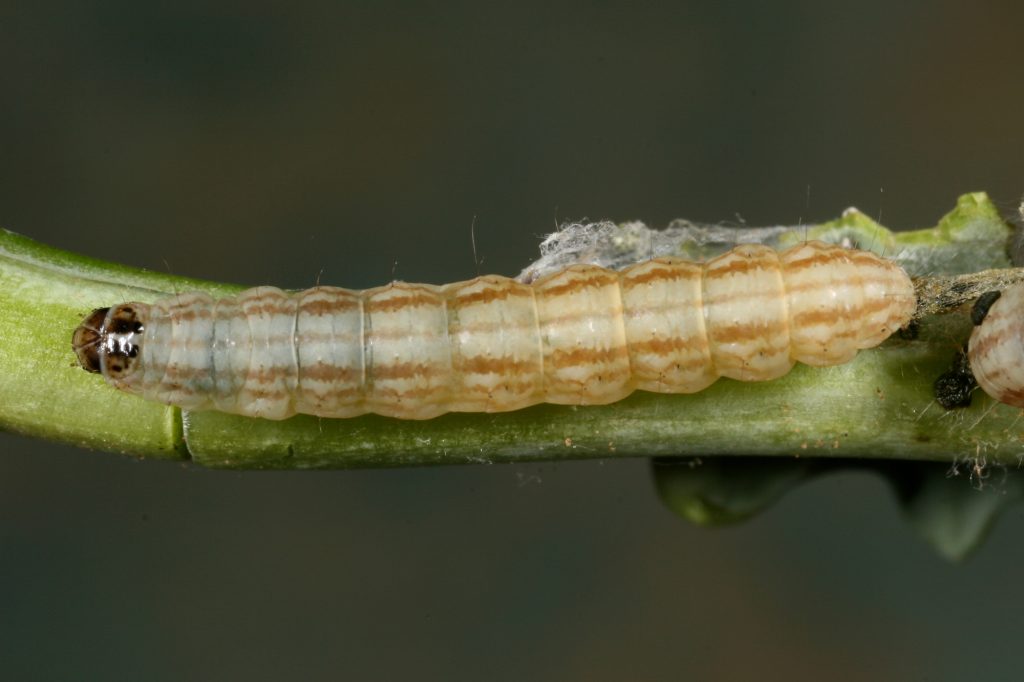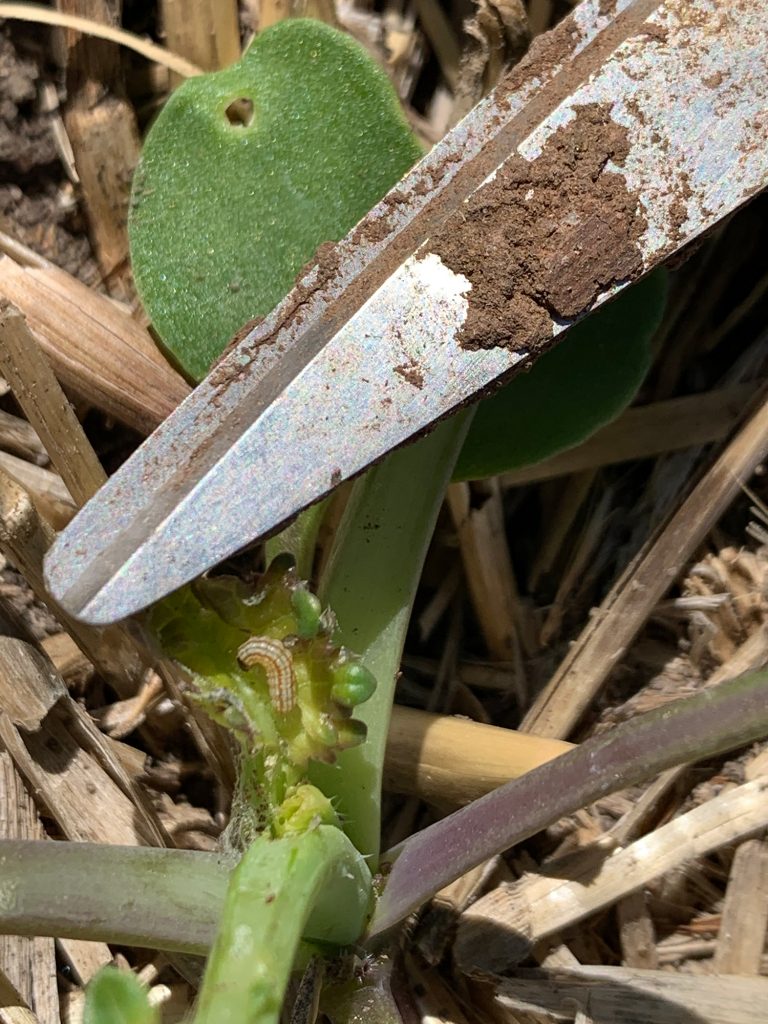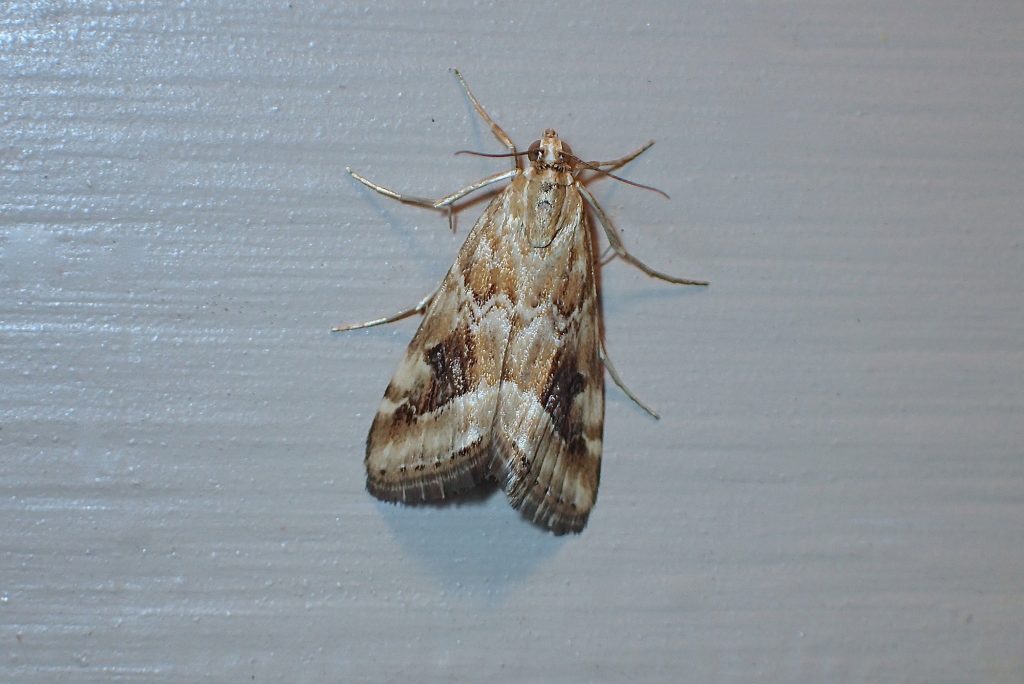With early season sowing and growing of young canola and forage brassicas underway, cabbage centre grubs have been populating some paddocks in southern and central New South Wales.
What are cabbage centre grubs?
In Australia, the cabbage centre grub is a single common name given to two moth species.
One species is the Australian native, Hellula hydralis,which is distributed throughout Australia.
The other species is the introduced, Hellula undalis, which occurs in northern and eastern Australian states, but not further south of central New South Wales.
The larval stage of these two Hellula sp. feed on brassica crops; however, they likely can’t be distinguished by eye (and we think don’t think it is necessary to do so for management purposes).
Cabbage centre grub larvae are cream in colour with a dark head and longitudinal red-brown stripes running along their body. The larvae don’t grow to very large, reaching ~15 mm in length.
Cabbage centre grubs have chewing mouthparts and tend to feed around the growing points of cruciferous plants. They often behave like ‘borers’, creating large blisters inside the leaves, or burrowing into the growing point or the main vein of a leaf.
Cabbage centre grubs produce webs on foliage, which can act to bind leaves together.


Photo by Matt Gould 
Photo by Rob Fox

Photo by johneichler, CC BY-NC 4.0 
Photo by Marco Vicariotto, CC BY-NC-ND 4.0
Managing cabbage centre grubs
Cabbage centre grubs are generally regarded as minor establishment pests during autumn for two reasons:
Firstly, they are warm season species, with their presence rapidly declining as winter approaches.
Secondly, under good growing conditions crops are likely to bounce back and outgrow damage as infestations wane.
However, there have been concerns about the extent of damage in young plants seen recently. And we certainly have had reports of badly affected paddocks over the years. So, paddocks should be monitored closely, and decisions to spray or not should be made on a case by case basis.
Here are some points to consider when contemplating chemical control:
- There are insecticides registered against cabbage centre grubs. On label, they have also been referred to as simply ‘centre grub’.
- If considering spraying, note that cabbage centre grubs can be difficult to control using contact insecticides because larvae burrow within the plant and will form a protective layer around themselves by webbing leaves together.
- If we have an unseasonably warm April, cabbage centre grub populations may persist in crops longer than usual.
- Management of cabbage centre grub may be assisted with heavy grazing, although its impact may be limited for those larvae situated close to the plant crown.
Acknowledgements
Thanks to the following people for providing field observations: Matt Gould (Nutrien Ag Solutions), Adam Pearce (Elders), Barry Haskins (Ag Grow Agronomy and Research), Phillip Gray (AGnVET Services), and Michael Harris (AGnVET Services).
Cover image: Photo by Michael Harris





